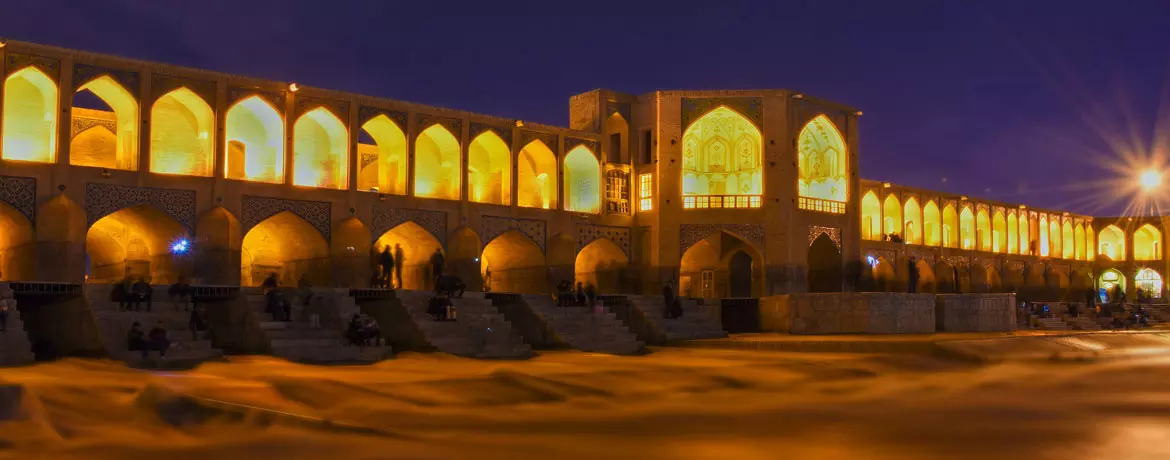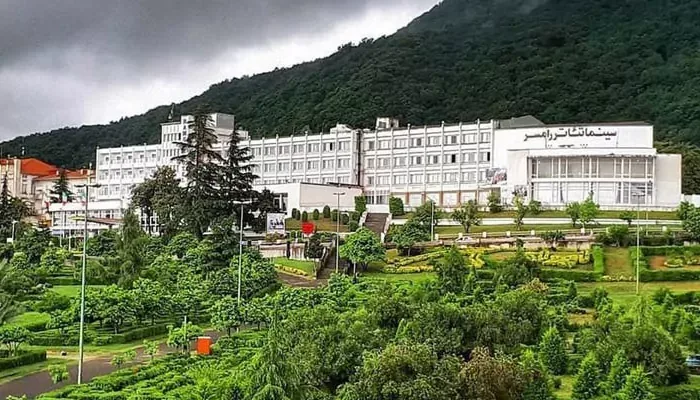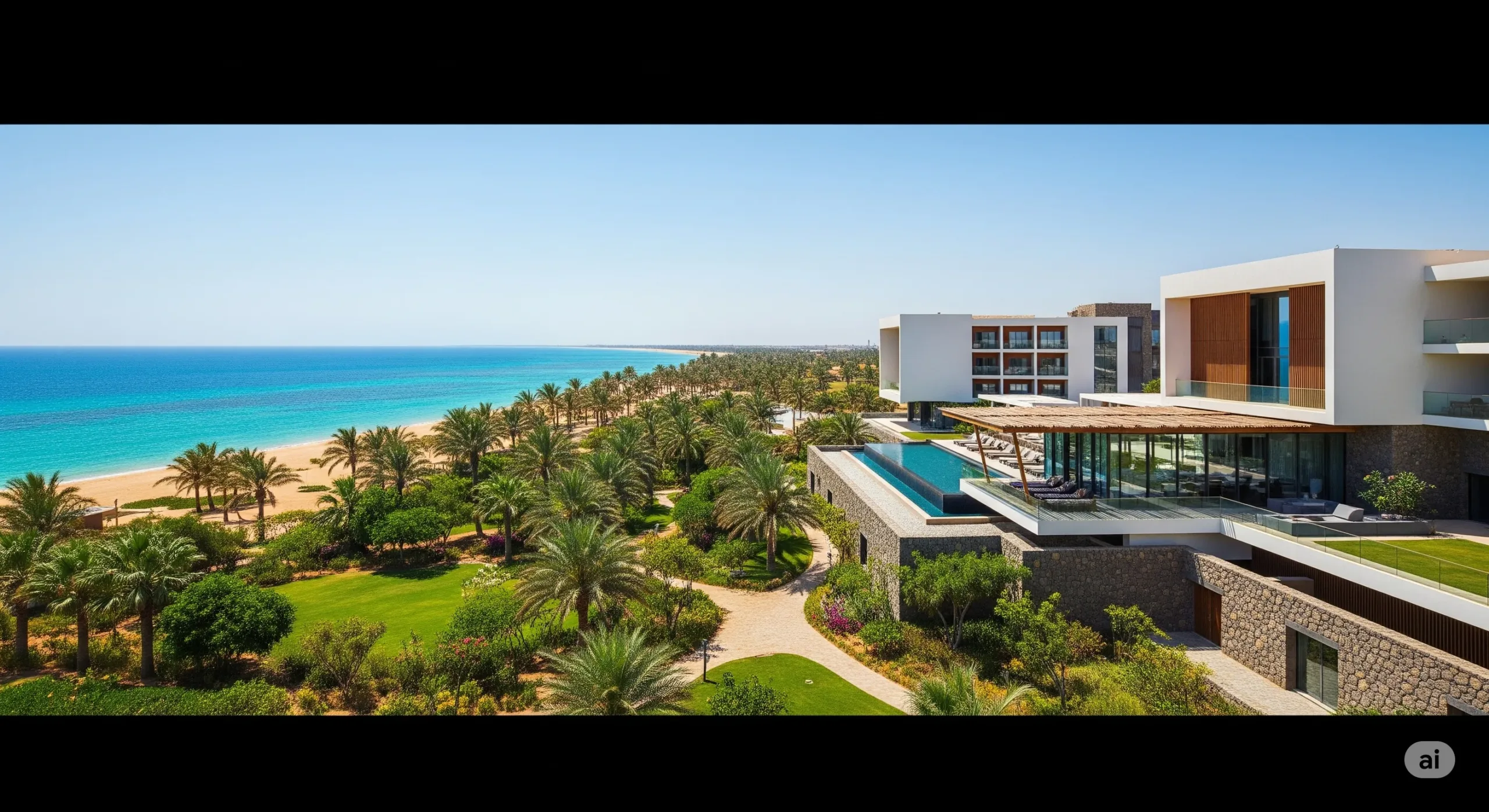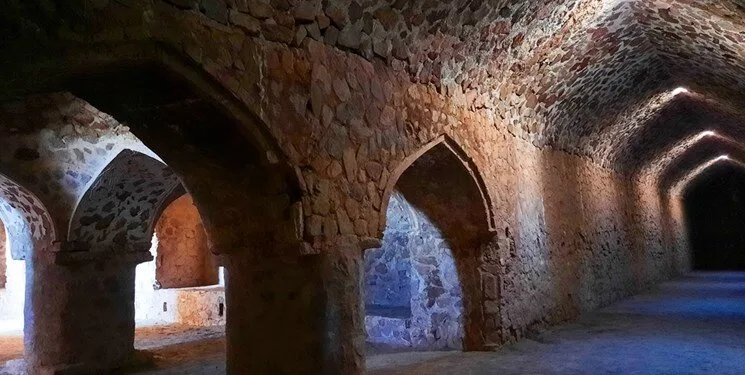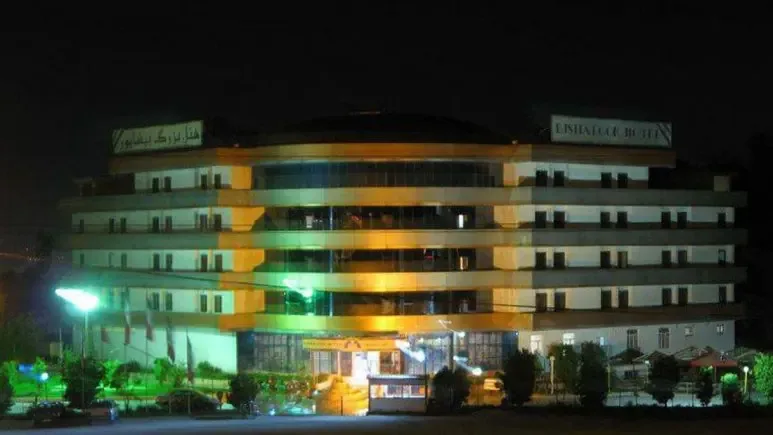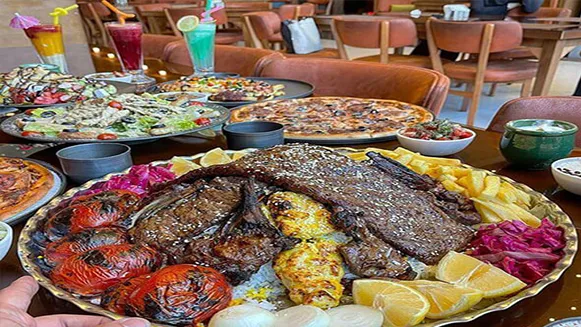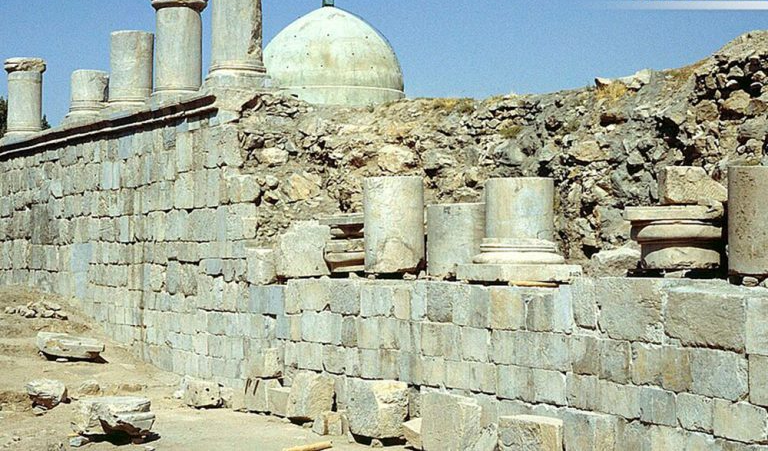Isfahan Iran : A Guide to Iran’s Cultural Gem
Isfahan is a city that all Iranians have either traveled to at least once or heard about its beauties. This city was chosen as the capital of the Safavids after Islam, and it hosts many historical artifacts from that era. Every year, millions of foreign tourists come to Isfahan to visit the magic of Iranian architecture. If you also intend to travel to this half of the world, you can obtain comprehensive information about this tourist city with Gulf City Pedia.
Everything You Need to Know About Isfahan:
About Isfahan
Isfahan’s Climate
Attractions in Isfahan
Isfahan’s Souvenirs
Isfahan’s Local Cuisine
Accommodation in Isfahan
Isfahan’s Restaurants
Customs and Traditions of Isfahan’s People
Public Transportation in Isfahan
Isfahan Travel Guide
A Glimpse into the World’s Artistry
Isfahan is the capital of Isfahan Province and also the Isfahan County, with a population of over 2,961,211 according to the 1395 census. The people of Isfahan speak Persian with an Isfahani accent, characterized by the addition of the letter “sin” to the end of words; additionally, the Armenians of Isfahan speak Armenian.
The city is bordered by Khomeyni Shahr to the west, the Sefidkuh Mountains and Sepahan Shahr to the south, Shahin Shahr to the north, and Dasht-e Sagzi to the east. Isfahan has been referred to by various names throughout history, such as Safahan, Safaviyan, Sepahan, Spaneh, Shahr-e-Stan, Safahan, Esbahan, Espahan, and more; however, apparently, after the Arab conquest of this region and due to the absence of the letter “p” in their language, it was named Isfahan.
Throughout history, Isfahan has been a center of government or has had great political and economic importance, from the time of the Achaemenids to the Sassanians, after Islam, during the Safavids, Qajars, and Pahlavis.
It is interesting to note that in 1394, Isfahan and Rasht were the first cities in Iran to join the UNESCO Creative Cities Network. Furthermore, since 1384, the 1st of Azar (November 22nd) of each year is designated as Isfahan Day, and to symbolize this day, a historical depiction is used from the tilework of the Qeisarieh Bazaar in Isfahan, inspired by the celestial figure of the Sagittarius constellation (Azar month). Isfahan’s selection as the Cultural Capital of the Islamic World was another honor achieved in 2006.
Isfahan Code: 031
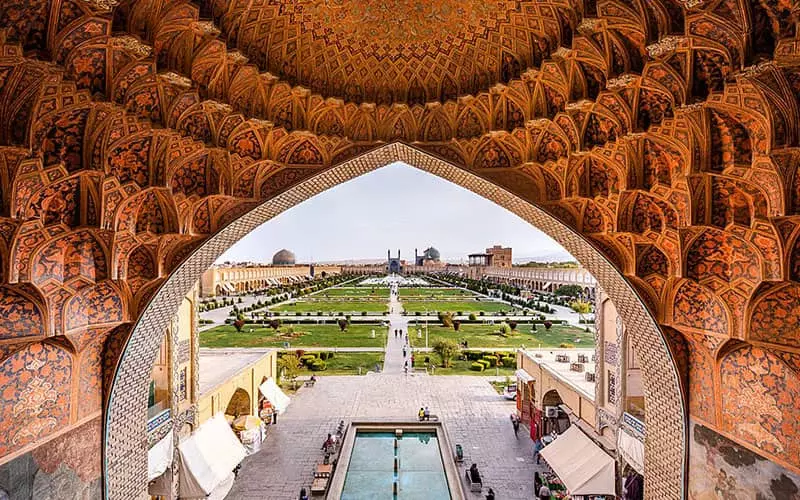
Climate and Attractions of Isfahan
Due to its location in the semi-desert region of Iran, Isfahan has a moderate and dry climate, with maximum temperatures reaching 39 degrees Celsius in summer and dropping to -18 degrees Celsius in winter. However, this desert climate is more noticeable in northern and eastern areas, while southern parts are cooler. Nonetheless, spring and autumn (especially the months of Ordibehesht and Mehr) are considered the best times to visit Isfahan, and many tourists choose these seasons for their travels. If you are looking for a cheaper trip, you will encounter reduced ticket and hotel prices during the winter.
Attractions of Isfahan
The attractions of Isfahan are so abundant and diverse that this city is often referred to as “Isfahan, Half the World”. Surely, visiting this number of attractions requires planning for a multi-day trip to be able to see the most important historical, cultural, and natural sites of Isfahan.
Historical and Cultural Attractions of Isfahan
Isfahan boasts numerous historical and cultural landmarks that have gained special value, importance, and widespread fame due to their inscription on the UNESCO World Heritage list.
Naqsh-e Jahan Square is Iran’s first registered UNESCO World Heritage Site
One of these places is Naqsh-e Jahan Square, which might be the first place tourists see upon arrival. This tourist attraction is Iran’s first registered UNESCO World Heritage Site. Sheikh Lotfollah Mosque, Ali Qapu Palace, Imam Mosque (Shah Mosque), and Qeisarieh Portal are among the other notable attractions in Naqsh-e Jahan Square.
Vank Cathedral, Chehel Sotoun Palace, and Hasht Behesht Palace are just a glimpse of Isfahan’s historical attractions. Bridges such as Khaju Bridge and Si-o-se-pol Bridge are also considered Isfahan’s attractions, especially at night when beautifully illuminated, they take on a distinct charm and become the subjects of many photographs.
Beautifully painted ceilings
Alongside the historical sites, Isfahan’s museums should not be overlooked. Museums such as the Museum of Contemporary Arts of Isfahan, Butterfly Garden Museum of Isfahan, and the Treasury of Islamic Heritage are ideal destinations for those interested in museum exploration.
Natural Attractions of Isfahan
Isfahan’s sights are not just limited to historical and cultural landmarks, as there are also numerous natural attractions in this city, each worth visiting. A visit to Najvan Forest Park allows you to hit multiple targets with one arrow; this complex includes various attractions such as bird gardens, cable cars, botanical gardens, butterfly museum garden, amusement park, Isfahan Aquarium, shell museum, carriage riding stations, green spaces, cycling areas, and more.
Isfahan’s parks are also delightful recreational destinations for tourists. Located in different parts of the city, these parks, with their accessibility and facilities, can provide you with pleasant hours. Some of the most famous parks in Isfahan include Sofeh Park, Meshtagh Park, Golmstan Park, and Ghadir Park.
Moreover, if you’re one of those who prefer to dedicate a full day to leisure and nature exploration, there are numerous options among Isfahan’s highlands. Among the most important of these destinations are Bahadoran Garden and Chadegan.

Shopping centers in Isfahan
Shopping is a key part of traveling to any city. Isfahan’s shopping centers include both modern complexes and its historical bazaars. Some of Isfahan’s commercial complexes include City Center, Park Complex, and Koosar Complex.
Isfahan’s Souvenirs and Local Cuisine
Isfahan is the cradle of Iranian handicrafts and managed to be the first Iranian city listed in the “World Cities of Handicrafts” in 1395; this itself is a testament to the abundance of valuable artistic works in Isfahan.
Engraving, enamel work, copper utensils, pen turning, embroidered fabrics, turquoise work, filigree, carpets, pottery, and ceramics are among Isfahan’s handicrafts that you can purchase as souvenirs.
In this city, edible souvenirs are also abundant; from traditional sweets like gaz and poulaki to pastries such as borshtook, sohan-e asali, rice sweets, nabat, and rose water from Qamsar Kashan, as well as honey from Fereydunshahr and Khansar, are among the souvenirs you can buy from Isfahan.
Isfahan’s Local Cuisine
Travelers visiting Isfahan can experience double the enjoyment due to the variety of delicious foods, from desserts to local soups. Certainly, biryani or biryoon holds the first place among the region’s cuisines. Mast Khoresh (yogurt stew) is also highly popular among locals and tourists alike.
Other local dishes of Isfahan include Kabab Moshti (lamb kebab), Kaleh Joosh (a type of stew), Haleem Bademjan (eggplant stew), Gheymeh Rizeh (a type of stew), Yakhni Loobia (bean stew), Haleem Mash (lentil stew), and Ghormeh Qormeh (meatball stew with beans). Isfahan’s cuisine is not complete without mentioning its delicious soups. Green vegetable soup, sumac soup, beetroot soup, milk haleem, omaj soup, and many more are just a few examples of Isfahan’s soups. Doogh Ghooshfil (cucumber yogurt drink) is another specialty of Isfahan, enjoyed for its balance of warmth and coolness.
Accommodation in Isfahan
Given the tourist nature of the city of Isfahan, numerous hotels operate, ranging from budget hostels to mid-range hotels and luxury hotels. The flagship of Isfahan’s hotels can be considered the five-star Abbasi Hotel, which is one of the remnants of the Safavid era.
Among other luxury hotels in Isfahan are the Parsian Kowsar Hotel, the magnificent Parsian Evin Kappu Hotel, and the Aseman Hotel. The Parsian Suite Hotel, the Antique Traditional Hotel, and the Espadana Hotel are listed as mid-range hotels. Kaveh Hotel, Jolfa Hotel, Hasht Behesht Apartment Hotel, Firouzeh Hotel, and others offer affordable accommodation options. Moreover, those interested in eco-lodges can experience an exciting and unique stay at Naghargar Eco-Lodge, Saray-e Safir Eco-Lodge, Naragol Eco-Lodge, and Hatif Traditional Eco-Lodge.
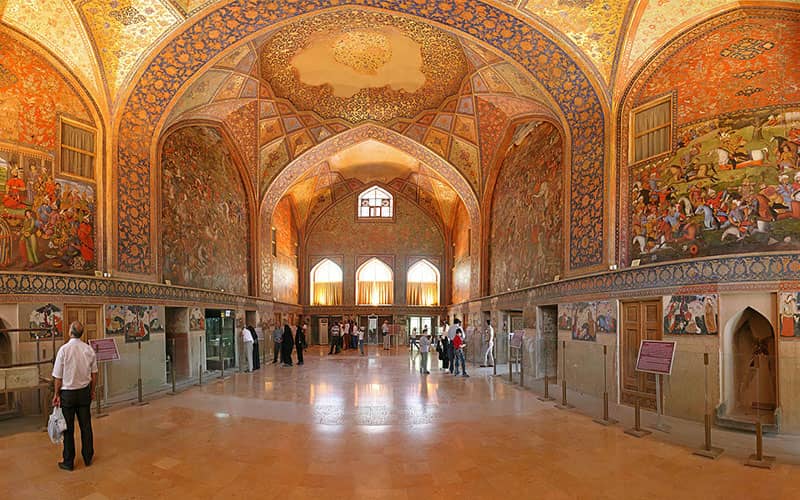
Isfahan’s Restaurants
One of the best places to dine is the Abbasi Hotel in Isfahan, which includes several restaurants, traditional eateries, a traditional teahouse, and a café.
Biryani Azam Restaurant is one of the most experienced biryani cooking centers. Naghsh-e Jahan Restaurant, located near Naghsh-e Jahan Square, Taranj Restaurant situated in the historic house of Hovans, Khan Gostar Restaurant with two branches in City Center and Jolfa Hotel, Shahrazad Restaurant, one of the oldest restaurants and cafes in Isfahan, and Biryani Azam Restaurant, one of the most experienced biryani cooking centers, are among the other dining options available to tourists. If you’re into fast food, Arabo Fast Food, Hermes Restaurant Cafe, Arka Restaurant Cafe, City Center Food Court, and Ben Opti Restaurant will cater to your taste.
Customs and Traditions of Isfahan
One of the most famous ceremonies held in Isfahan Province is the “Qaly Shuyan” ritual in Ardehal Mashhad, which takes place annually in the village of Khaweh Ardehal. This traditional and religious ritual is listed as the only Islamic religious ceremony on the UNESCO Intangible Cultural Heritage calendar (on the second Friday of the month of Mehr). Participants immerse one of the carpets of Imamzadeh Sultan Ali ibn Muhammad Baqir (AS) in a spring in remembrance of the carpet in which the Imamzadeh’s body was wrapped during the time of martyrdom. Some also symbolically wave their sticks in the air to represent the symbolic battle with the Imamzadeh’s murderers. This traditional ceremony dates back to a thousand years ago.
In another corner of the province, one of Iran’s largest mourning ceremonies is held in Nushabad in the Aran and Bidgol County. The tent pitching and mourning in Nushabad have a history of over a hundred years and are registered on the national list of spiritual heritage.
The interesting tradition of lighting fires and “Jal Jalani” is also performed in the nights of the seventeenth, eighteenth, and nineteenth of Dey in Natanz and its villages. People light a large fire on a high hill in the city, believing that the illumination of this fire will make the trees more fruitful.

Public Transportation in Isfahan
Isfahan hosts tourists throughout the year; therefore, it has a robust taxi system. If your travel budget is limited, the bus will be a more economical option for you. If you prefer the metro over buses and taxis, you can use the metro when traveling to Isfahan. Another option for intra-city travel in Isfahan is to use online taxis like Tap30 and Snapp.
By purchasing an Isfahan Card from ticket sales booths, you can easily pay for taxi, bus, or bicycle rentals. If you travel to Isfahan by private car, you can also pay for parking fees with the Isfahan Card.
Isfahan Travel Guide
Isfahan, known for its abundant historical and cultural attractions, is considered one of the major tourist destinations in Iran. Therefore, every year, a large number of domestic and international tourists include a trip to this city in their itineraries, reaching this remarkable city by air or land. Below is a brief overview of travel options to Isfahan.
Air Travel to Isfahan
Air travel is one of the best and fastest options available to travelers to enjoy a pleasant journey to Isfahan by purchasing a flight ticket from Tehran to Isfahan without hassle or fatigue. With an international airport located in the city, daily flights to Isfahan are operated by various airlines. The airport is located outside the city, and travelers can use taxis, which operate 24 hours a day, for transportation. Additionally, using online services such as Snapp and Tap30 is also possible.
Land Travel to Isfahan
For land travel to Isfahan, you can use buses, which are more cost-effective compared to airplanes and offer the opportunity to enjoy the scenery along the way. Tehran residents interested in traveling by bus to Isfahan can do so by visiting the terminals located in Biheqi, South, West, and East areas, offering daily bus services to Isfahan. Isfahan has four terminals located in different parts of the city: Kaveh Terminal in the north, Safa Terminal in the south, Jey Terminal in the east, and Zayandehrood Terminal in the west.
Travel by train to Isfahan is another option for visiting this attractive metropolis. If you reside in cities such as Tehran, Mashhad, Tabriz, Yazd, Qom, Shiraz, or Ahvaz, you can easily travel to Isfahan.
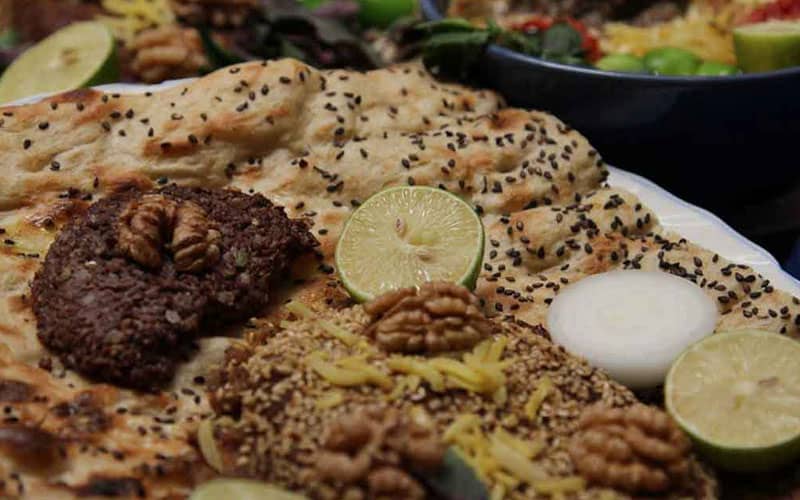
With all these options, many of you may prefer traveling by private car over other means; therefore, if you live in Tehran, you can reach Isfahan by driving on the freeway and passing through Qom, Kashan, and Shahin Shahr. The distance from Tehran to Isfahan is approximately 450 kilometers, taking about five hours to travel. Furthermore, by passing through the old Tehran-Qom route and Salafchegan, you can have a pleasant journey to Isfahan.
If you reside in western cities such as Sanandaj and Kermanshah, the route through Hamedan, Malayer, Arak, and Shahin Shahr will take you to the tourist city of Isfahan. For a journey from southern cities to Isfahan, you can take the 930-kilometer route through Sirjan, Babak City, Abadeh, and Reza City.
If you intend to travel from eastern cities of the country such as Birjand, you will have a 10-hour journey ahead, passing through Khusf, Tabas, Khor, and Nain.

